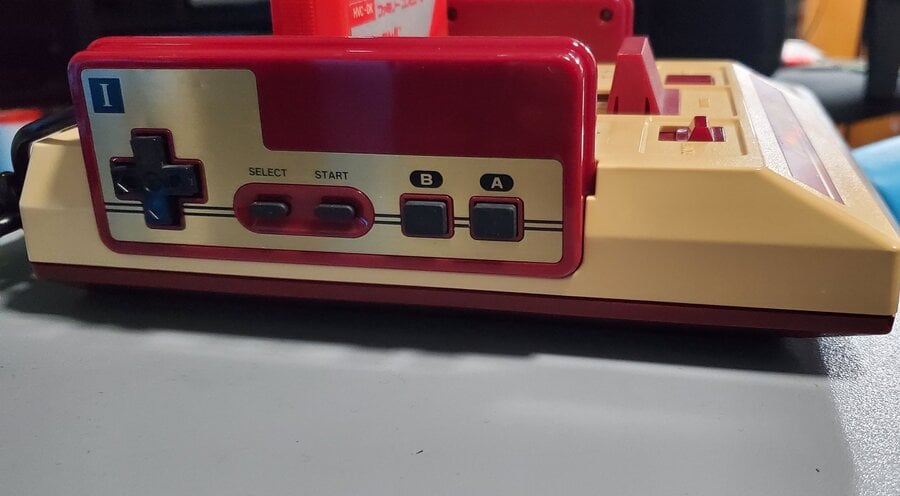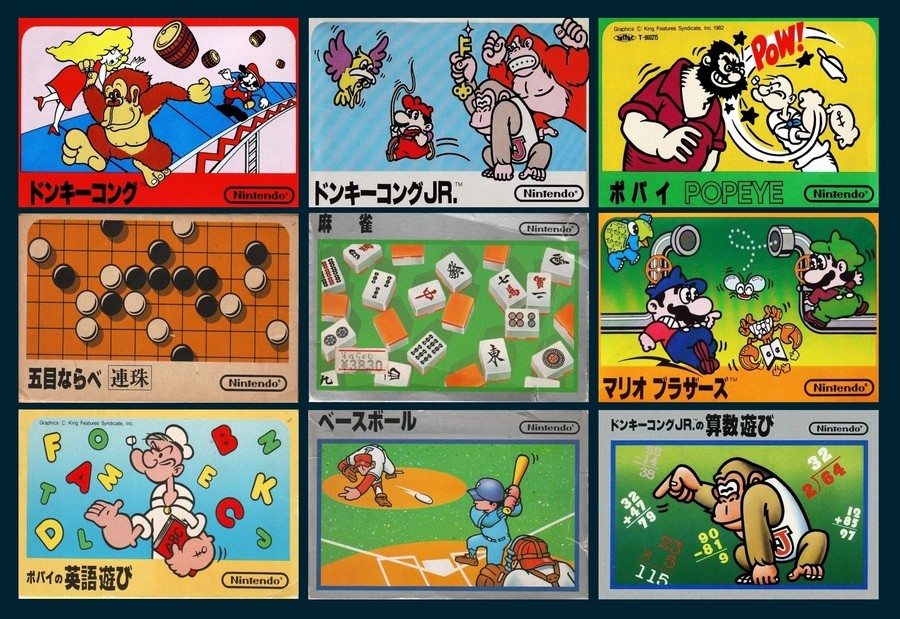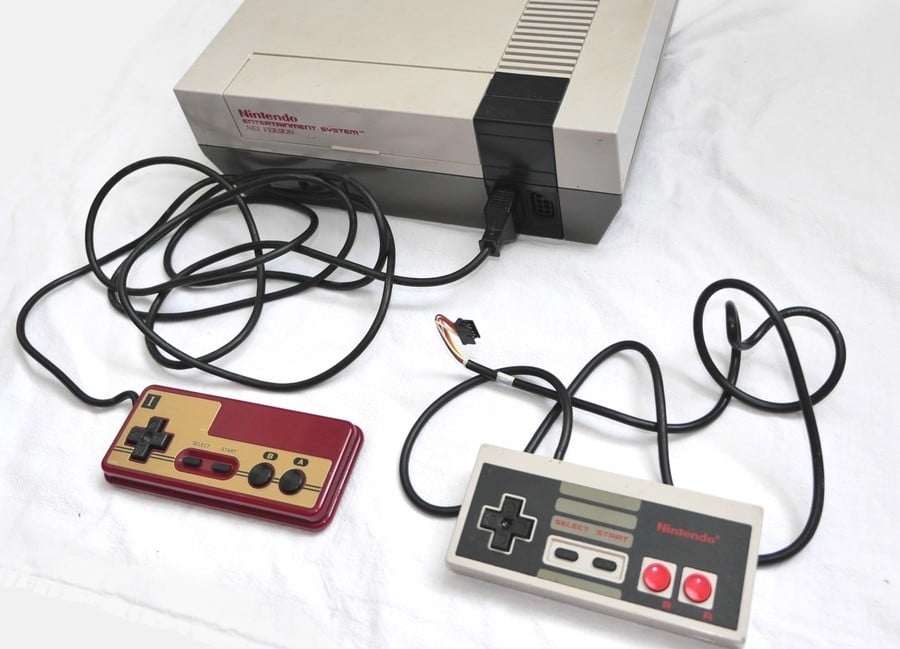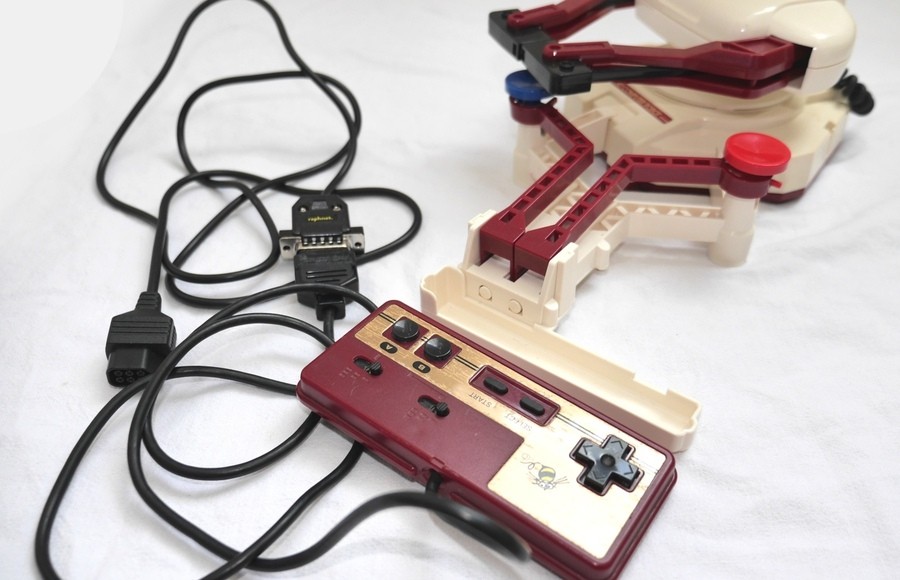
"Very nice, as usual!" says Joseph Redon, having read our 40th anniversary article on the Famicom. We've mentioned Joseph on the site before and, given that he's head of Japan's Game Preservation Society, he's a valuable contact for information and imagery. He then adds, "Most sites are using photos of the round button Famicom controller for the 40th anniversary, while the first Famicom actually had square buttons. It's like showing a CoreGrafx instead of a PC Engine, simply because CoreGrafx was more recent. I think it's fine, it's just most news sites don't even know or don't really care. For an anniversary article, you want to show the original machine. I might be too picky…"
Joseph is, of course, correct. The first model of Famicom released on 15 July 1983 had square buttons made of rubber (which kind of reminds us the first model of ZX Spectrum). When Nintendo initiated the product recall, which we mentioned, they revised not only the hardware of the console, but also its controllers.
Now, in everyone's defence, the fact the original model was recalled means there's obviously going to be far fewer out in the wild compared to the revised model, or indeed any other model such as Famicom Twin or Famicom AV. For collectors, it's much rarer and apparently more sought after. Though considering the hardware defect – and the slower responsiveness of the rubber buttons – we honestly would not recommend it for anyone wanting actually to play the system. Furthermore, since the Famicom controllers are hardwired into the unit, you're unlikely to find loose controllers with square buttons.
Despite all this, though, for authenticity and historical accuracy, it's worth mentioning and showing the original model (it also had a smooth plastic underside, instead of textured). So we asked Joseph for a photo. Unfortunately, at the time of emailing, he was in Kyoto on business, and thus away from the Tokyo laboratory with all the hardware. Even the illustrious Evan Amos, whose meticulous photography of retro hardware is a priceless treasure for the community, only has photos of the revised circular model. The only source online is private collectors and so, in the interest of education, we link you to nintendosegajapan.com which has an entire entry on the original system, complete with multiple photos.
Here's also a Twitter post with photos, highlighting just how rare (and real) they are:
This interesting retconning of the Famicom design in the public consciousness reminds us of the internet meme of how Hollywood depicts Roman soldiers as the same throughout history, despite the fact the uniform obviously would have changed over the Roman Empire's roughly 1000-year existence.
To play further devil's advocate, though, it's also tricky balancing historical accuracy for a specific year's anniversary (in this case, 1983), with the memories of enthusiasts which will encapsulate an entire decade. A lot of the discussion for the 40th anniversary is going to revolve around all the cool games released from 1986 onwards, which benefited from improved mapper chips. Take a look at the chart below, showing all nine of the Famicom games released in 1983. They're nice enough, but aren't going to hold the same reverence as, say, Zelda or Rockman or Contra. A measured and contextualised reflection is what we hoped to convey with our 40th anniversary article – but rest assured, we sincerely love the little fellow.

Fun Famicom Fact 1: The PCB of the Famicom's 1P controller is identical to the NES controller PCB. Meaning if, like us, you prefer the Famicom's (revised) form factor, and wish to play the games like a sophisticated connoisseur, you can buy loose junk controllers and simply replace the shells. It's the way things should be. Junk FC controllers are currently inexpensive, so we'd appreciate it if readers wait until we've finished reshelling our collection before diving onto eBay. Thanks. (Apparently the 2P controller's microphone requires modding to work on an NES - we've not tested it yet.)

Fun Famicom Fact 2: The original Famicom is not very good for actually playing the games, thanks to the system not natively outputting AV (it's RF only by default), and that when modded to output AV, it inherently suffers from severe jailbars on-screen. The Famicom Twin too, though different owners claim different mileage. The NES toploader also has jailbars. So you may want the revised AV Famicom which fixes the jailbars, but unfortunately does not allow Zapper use. Alliteratively you could get an NTSC toaster NES and reshell the controllers, though that lacks the Famicom's extra audio channel unless you mod it. You cannot mod a PAL system for 60Hz. What is your preferred method for FC / NES gaming?
Fun Famicom Fact 3: If you own an American or European toaster NES and were hoping to buy the cheaper Japanese FC Robot and Gyromite, since the game data and robot itself are cross-region compatible, be warned that the chunkier NES controller won't fit inside the Japanese Gyromite chassis. And if you're thinking you'll just buy a Raphnet FC to NES controller adapter, and then an official third-party FC controller such as the one by Hudson, note that it too won't fit. We didn't make this mistake, of course, we absolutely, definitely knew it beforehand. Ahem. The only way to use the Japanese Gyromite on a Western system is to replace the NES controller shell as pictured.

Famicom controllers - they're a funny old thing, aren't they? But now you know.
Wait a minute, didn't Joseph say earlier he was in Kyoto? The city of Nintendo's HQ? Joseph, what kind of "business" was this exactly? This Kotaku news story is completely unrelated, honest...





